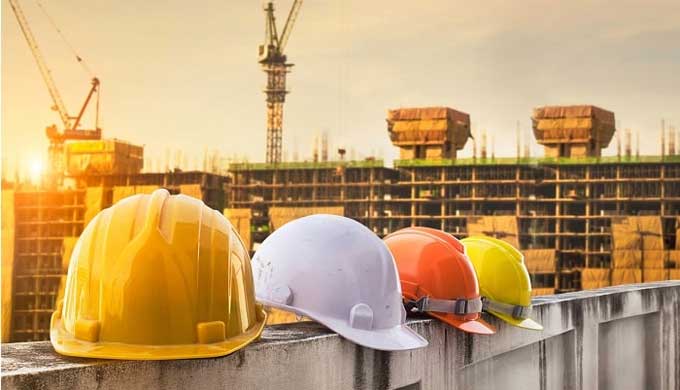
Study on the Impact of COVID-19 on Construction & 7 Successful Tips
The COVID-19 outbreak has been affecting communities worldwide, with more than 2.5 million cases reported by April 30. Although governments and companies around the world are responding fast, much remains to be done. It is more important than ever to pay attention to construction in this tough economy.
The Impact of COVID-19 on industry dynamics
A recession will not only affect construction demand short term but will also affect long-term supply and demand, resulting in long-lasting changes in investment patterns.
The virus contains within the next few months and that the right economic policies enacted. Nonetheless, longer-term lockdowns and other severe restrictions, even intermittent ones, could cause economic downturns that would not recover until 2023.
Short Term & Long Term Solution
Short Term
Remote working is becoming more common across industries. Design and engineering teams are increasingly using digital collaboration tools like building information modeling (BIM). Engineers and contractors are re-optimizing projects and re-planning projects with 4D and 5D simulations.
We are developing integrated digital-twin solutions that can use from the beginning to the end of projects. As contractors, we are turning to online channels to monitor the well-being of their employees, order materials online, manage limited resources with greater accuracy, and maintain cash flow. Contractors are stockpiling materials, identifying alternative suppliers for long-lead items, and purchasing critical materials.
Long Term
Technology and digitization investments innovates building systems. Before the crisis, the industry was facing a labor shortage. With the possibility of rolling out physical-distancing measures and restricting the free movement of workers, there will be an even greater shortage of skilled labor.
Simulation, digital workflow management, and scheduling optimization will continue to increase productivity. Big construction companies will also invest in the automation of back-office processes and on-site processes.
Designing healthier environments is part of the acceleration toward sustainability. Towards reducing carbon emissions, governments can stimulate the economy by promoting energy-efficient redevelopment of housing. Direct public investments may combine with policy changes as incentives.
The demand for more sustainable buildings and communities will also increase as communities and buildings become more accessible to local amenities, air quality standards improve, and recycled materials become more popular.
7 Successful Tips
1. Adopt and roll out digitization at a faster pace
Perfect road maps cannot be experimented with at this point. Organizations should make use of well-established remote use cases. Using a digital model and scaling up remote collaboration may be one way to motivate contractors to reduce the number of staffed offices at the site.
With the availability of e-commerce, distributors may have to rethink their fulfillment model with minimum physical interactions, especially when sales teams can work remotely for customer contacts, sales, and order processing. Last but not least, building materials companies will have to ensure that BIM is current, e-commerce is accessible, and that remote sales are effective.
2. Culture and skills investment
In turbulent times, it is essential than ever to balance performance and health. Considering remote work and apprehension about job security and productivity require industry players to invest in culture proportionately.
A more crucial issue is up-skilling the entire workforce and requiring training on new technologies and procedures such as BIM. Through many of these activities, employees can engage with each other more effectively.
3. Develop a portfolio-wide control tower
If construction prices are at risk of being squeezed, companies should use their overall size to help avoid getting squeezed. As the construction season approaches, the allocation of resources will pose a significant challenge. In evaluating portfolio assets and projects, trade-offs will require.
Hence, companies should establish central monitoring functions capable of identifying and responding quickly to resource allocation requirements. These capabilities can include real-time transparency over project processes, material inventory, subcontractors, services, and costs, in addition to systematic assessment of portfolio parts affected by COVID-19. In addition to optimizing sourcing, players with enhanced portfolio transparency fare much better than those without it.
4. Resilient supply chains
The fragmented nature of today's contracting practices hinders large-scale developments in how we work the expansion of digital tools, general investments, and R&D.
5. Invest in new resources
Increasing funding for future high-growth segments, reallocating competencies, and sharpening core business focus are examples. Achieving effectiveness will require both organic and inorganic methods.
6. Consider shifting work off-site
Vendors and subcontractors need to identify components and subsystems that can be preassembled. Further down the road, players may build off-site more significant components of a construction project.
7. Improve customer service
In addition to traditional retail, today's consumer preferences include high-speed Internet access, remote working, and integrated communities. Nonetheless, the long-term effects of many of these trends seem apparent. It is therefore increasingly important to stay in touch with your customers.
To get more details, watch the following video tutorial.
Video Source: Green Building Institute
Conclusion
The industry has played an instrumental role in responding to and recovering from the crisis, whether by building hospitals in a few days or donating lifesaving equipment. In addition to handling the most pressing construction-related needs, releasing labor availability that is currently constrained could help drive recovery.
However, some industries have suffered as well. There have been several closings of construction sites across the world. Moreover, supply chains have been disrupted, and operations have been restricted at most open sites.


